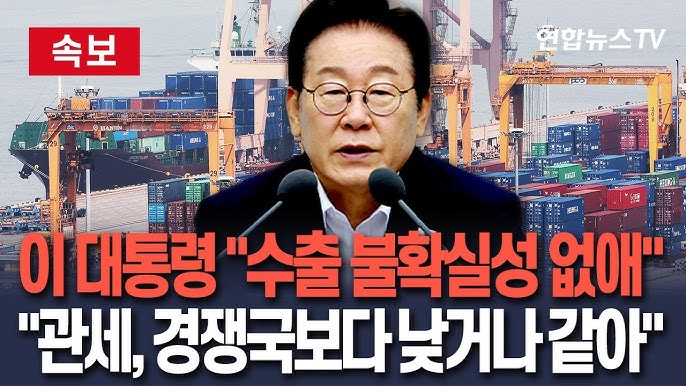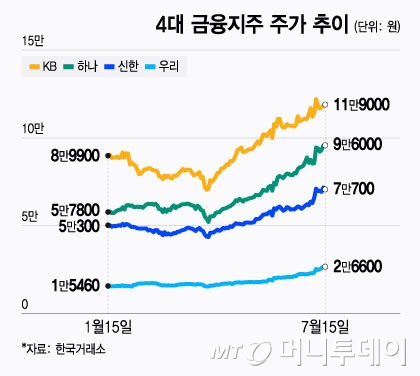In a move that surprised some but had been building for weeks, President Donald Trump announced a new trade agreement with South Korea that will impose a 15% tariff on South Korean imports. The deal helped Seoul avoid steeper tariffs — originally set at 25% — and was announced just one day before the U.S.’s self-imposed August 1 deadline for countries to finalize trade terms or face increased duties.
1. Core Terms of the Deal: A 15% Tariff Secured
The Trump administration had warned that, beginning August 1, imports from various nations would face higher tariffs unless trade deals were signed. For South Korea — a major exporter of semiconductors, automobiles, and steel — that meant the looming threat of a 25% tariff. Instead, the two countries struck what Trump described as a “Full and Complete Trade Deal.”
“I am pleased to announce that the United States of America has agreed to a Full and Complete Trade Deal with the Republic of Korea.”
– President Donald Trump, via Truth Social
The announcement followed a series of last-minute trade policy rollouts and came as Japan had already negotiated a 15% tariff rate with the U.S., putting pressure on Seoul. The 15% rate matches the tariff terms recently granted to Japan and the European Union.
The deal also includes a $350 billion investment pledge from South Korea into the U.S. economy. Considering that South Korea posted a record $56 billion trade surplus with the U.S. last year, many in Seoul have welcomed the outcome as a positive result.
The 15% tariff will apply to key South Korean exports such as automobiles and semiconductors. However, steel and aluminum will be taxed at a higher 50% rate, in line with global U.S. standards — a blow to Korea’s other leading export sectors.
2. President Lee Jae Myung Welcomes the Agreement
South Korean President Lee Jae Myung praised the agreement, saying it puts South Korea on equal or even better footing compared to other countries.
Lee also confirmed the establishment of a $350 billion bilateral investment fund, of which $150 billion will be directed toward a shipbuilding partnership. In a Facebook post, Lee described the agreement as “the first major trade challenge” since taking office in June and declared, “We have overcome a major hurdle.”
“Through this deal, we have eliminated uncertainty over our export conditions and ensured that tariffs on our goods are no higher than those faced by our main trade rivals.”
– President Lee Jae Myung, via Facebook
3. A Key Win for Korea: No Expanded U.S. Access to Korean Rice or Beef Markets
One of the most sensitive sticking points for South Korea was its domestic agricultural market. The government successfully resisted U.S. pressure to further open rice and beef imports — a move that would have triggered widespread protests from Korean farmers.
Instead, the investment portion of the deal strategically supports Korea’s stronghold in global shipbuilding. $150 billion will go toward helping the U.S. expand its shipbuilding capabilities — including military ships — at a time when its own industry is in decline. Korea, second only to China in global shipbuilding, sees this as a win-win: addressing U.S. security needs while reinforcing its own industrial strength.
The rest of the $350 billion investment appears to come from funds already pledged during the Biden administration but not yet deployed — aimed at bolstering U.S. manufacturing of electric vehicles, semiconductors, and batteries.
The agreement does not touch on the military alliance between the U.S. and South Korea or the billions Washington spends annually to support Korean defense against North Korea.
Trump has previously threatened to withdraw U.S. troops unless South Korea paid more. While some negotiators considered bundling that issue into the current talks, it has been deferred to a separate summit, set to occur within two weeks during President Lee’s visit to Washington. That summit may include another major financial commitment from Seoul.
4. Additional Terms: LNG Purchase, Tariff Reductions on Autos
As part of the deal, Trump said South Korea agreed to purchase $100 billion worth of liquefied natural gas (LNG) and other U.S. energy products, though details on timing and structure remain unclear.
Trump also noted that President Lee would visit the White House within two weeks. Under the agreement, South Korea will reduce tariffs on U.S. products — including cars, trucks, and agricultural goods — to zero. In return, the U.S. will lower tariffs on Korean-made cars from 25% to 15%. Additionally, tariffs on Korean semiconductors and pharmaceuticals will not be more punitive than those on products from other nations. Crucially, Korea’s rice and beef markets remain closed to further U.S. access.
In parallel business developments, Korea’s LG Energy Solution signed a $4.3 billion deal to supply Tesla with energy storage system batteries, and Samsung Electronics finalized a $16.5 billion semiconductor supply agreement with the U.S. automaker.
5. Negotiation Timeline and Comparative Outcomes
Senior Korean officials — including Deputy Prime Minister Koo Yun-cheol, Industry Minister Kim Jung-kwan, and Trade Minister Yeo Han-koo — were in Washington for intensive negotiations leading up to the agreement. It is believed they met directly with Trump before the announcement.
After Japan secured its own tariff deal earlier this month, Seoul found itself in an increasingly pressured position. In contrast to the 15% rate granted to South Korea, Trump announced on the same day a 25% tariff on Indian imports and a 50% tariff on goods from Brazil.


























